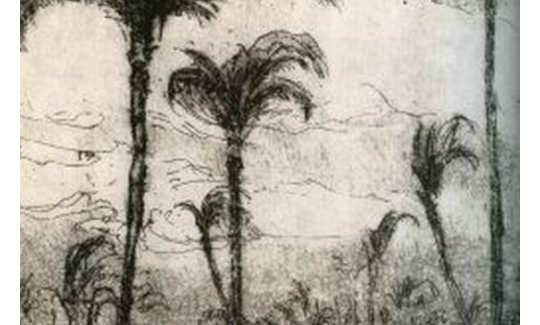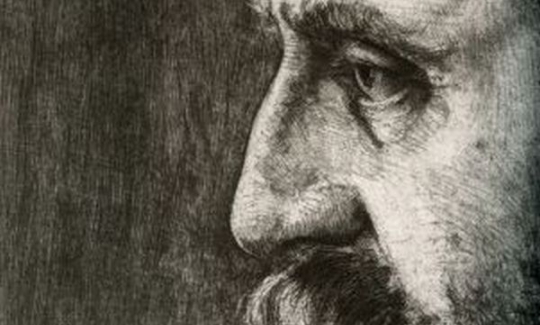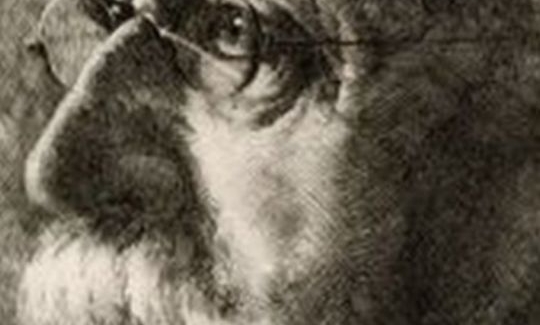Hermann Struck - Dreamer on the Carmel
Thursday, 06.04.17, 20:00
:
Svetlana Reingold
More info:
046030800Hermann Struck (1876-1944) is considered as one of the most important print artists of Germany and Israel in the first half of the 20th century. For more than forty years as a successful and respected artist, he created a wealth of works on paper, mainly portraits and scenery.
He also played an important role in Zionist activities, both worldwide and in Israel. He always attended the Zionist Congresses, and participated in artistic initiatives after immigrating to Israel, among them the Tel Aviv Museum of Art, and the revival of the Bezalel School of Arts in Jerusalem. Struck was renowned as a teacher of the graphic arts, having given courses in art printing while still in Germany. Among his many students were Max Liebermann, Lovis Corinth, Marc Chagall, Jacob Steinhardt and Joseph Budko.
In December 1922, Struck transferred his centre of activity from Berlin to Haifa. Settling in this city was a cultural event of great importance for Israeli art. His presence as a Jewish Zionist artist of international renown contributed greatly to the development of the artistic community of northern Israel, in particular of Haifa, where he settled in a 3-storey building in Hadar Hacarmel designed by his friend Alexander Baerwald, a brilliant architect working in Israel in the first half of the 20th century. Here Struck reconstructed his Berlin studio, gathering round him a group of students specializing in the various print techniques, among them Anna Ticho, Zvi Gali (Goldstein), Ari Erich Glass, Joseph Ehrlich, Meir Ben-Uri and others.
More than 90 years have elapsed since Struck moved from Berlin to Haifa in order to fulfill his Zionist dream. The present exhibition, which opens the doors of the Hermann Struck Museum, his home in Haifa, is an attempt to comprehend his works through a combination of elements. It presents a holistic picture of his oeuvre and the questions deriving from it: How did Struck fit in as a Jewish artist in the cultural expanse of German neo-romanticism? How did he integrate his reservations about modernism or his esteem for modern achievements in science and art in his artistic perception? How did his works express his affinity for the ancient Jewish tradition and the new Zionist ethos? How did he combine his western origins with his choice to emigrate to Eretz-Israel in the heart of Orient? This dualism remained with Struck throughout his life, and the dilemmas that gave rise to his oeuvre are the focus of the current exhibition. It presents a picture of an artist whose work was indivisible from the complicated, colourful and multifaceted culture of his time.
Ninety years have elapsed since Hermann Struck transferred his Berlin home to Haifa in 1922, thus fulfilling his Zionist dream. The opening exhibition of the Museum in the house where Struck lived after immigrating to Eretz Israel presents the important landmarks in his life. At the beginning of the 20th century he was already receiving praise from the art critics, and fame as a successful and renowned artist. His travels worldwide, his visit to Eretz Israel in 1903 and to American in 1912 were quite exceptional according to the German mores of that era.
Struck was an active Zionist and a devout Jew, a successful artist with cultural, personal, and international business connections. During WWI, as a German officer in Russia, he filled a sensitive and difficult position as liaison between the German Army and his fellow Jews of Eastern Europe. His extraordinary decision to leave Germany in 1922 and settle in Israel is evidence of his determination and courage. As of 1933 he supported and assisted Jews seeking refuge in Eretz Israel from the Nazi menace. In 1944, after a painful illness, Hermann Struck died at his home in Haifa.



